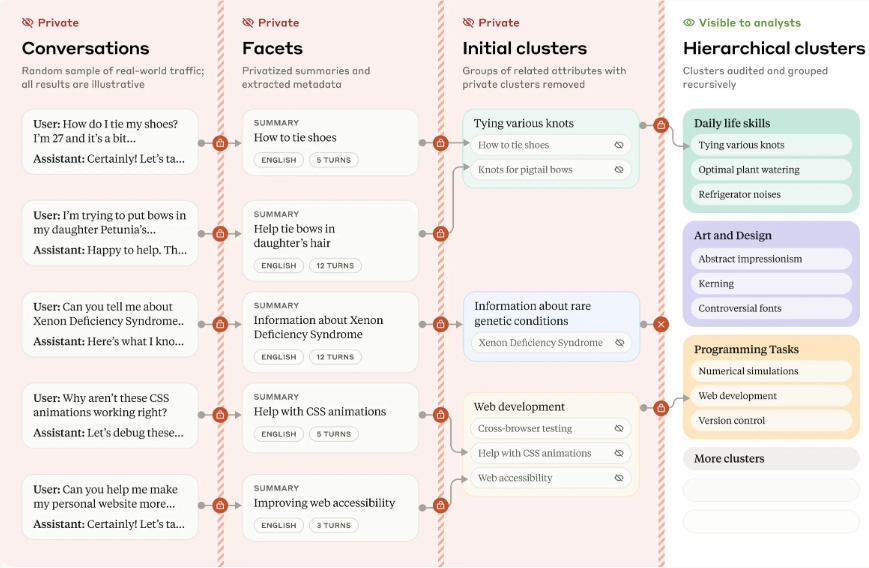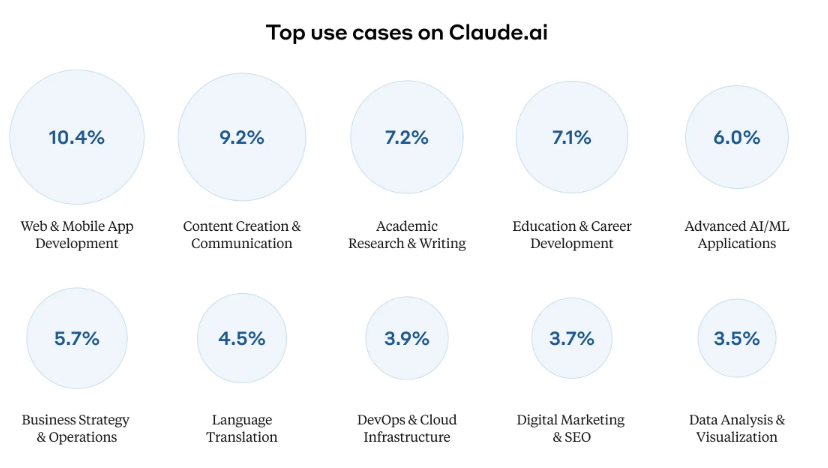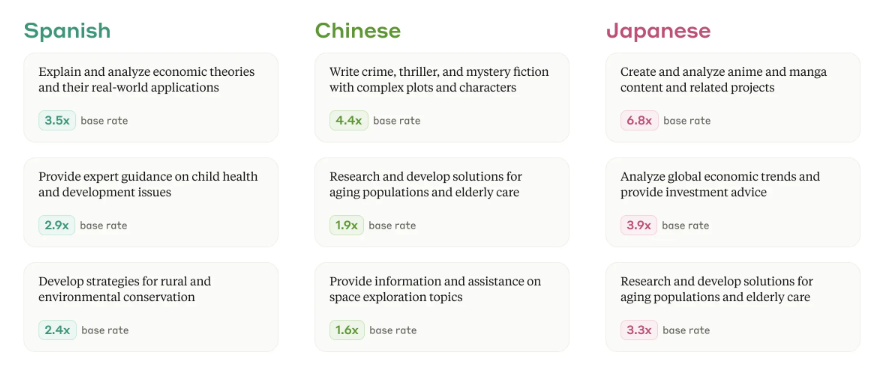Anthropic recently released a technical report based on millions of Claude use cases, providing an in-depth analysis of user preferences and needs in different scenarios. The report uses Clio statistical methods to anonymize conversation content to ensure user privacy. This report not only reveals Claude's wide range of applications in software development, education, and business, but also reveals the unique language usage habits and interests of users in different cultural backgrounds. Through in-depth analysis of the data, Anthropic provides us with a comprehensive understanding of Claude's usage and provides a valuable reference for the development of future AI models.

The report shows that Claude's application is particularly prominent in the development field, with development-related conversations accounting for more than 10% of all conversations, becoming the most widely used category. Software developers use Claude to perform a variety of tasks from debugging code to explaining Git operations, fully demonstrating its usefulness in the coding process.

In addition, educational use also occupies an important position, with more than 7% of conversations focusing on teaching and learning, reflecting users' needs for Claude in knowledge transfer. Meanwhile, conversations related to business strategy and operations also accounted for nearly 6%, including tasks such as writing professional communications and analyzing business data. Clio has also found some unexpected use cases, such as dream interpretation, football match analysis and disaster preparedness.
In terms of language use, the application of Claude varies according to cultural background. Chinese users are particularly keen on creating thriller novels when using Claude, while Japanese users are more inclined to anime-related content, and Spanish users are more focused on business research. This reflects the differences between users of different languages in using Claude. Unique needs and interests.

Clio's statistical process includes extracting features, semantic clustering, cluster descriptions, and building hierarchical structures. Through these steps, Anthropic's analysts can better explore and understand users' usage patterns.
This report provides us with in-depth insights into the usage of Claude, and also demonstrates the diverse needs of users in different fields and cultural backgrounds.
Detailed report: https://www.anthropic.com/research/clio
Highlight:
Development uses account for the largest share of Claude usage, with over 10% of conversations related to coding.
Applications in the education and business fields are equally important, with teaching conversations accounting for more than 7% and business-related conversations approaching 6%.
Chinese users prefer to write thriller novels, which shows the cultural differences and interests of users in different languages.
All in all, this report from Anthropic provides a valuable reference for us to understand the practical application of large language models, and also demonstrates the application potential of Claude in different fields and cultural backgrounds. The Clio method mentioned in the report also provides new ideas for similar research in the future. Looking forward to seeing more research results on Claude in the future.